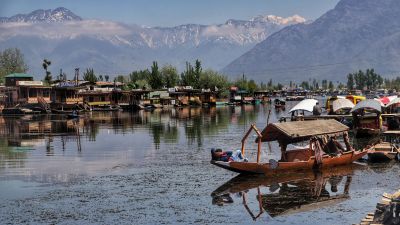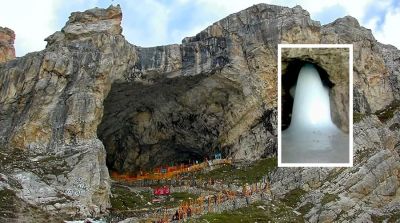Delving into Gulmarg's Tea Culture: Tea Plantations
Gulmarg, nestled in the breathtakingly beautiful Kashmir Valley, is a dream destination for nature lovers and adventure enthusiasts. But, did you know that Gulmarg also has a rich tea culture? Yes, you heard it right! This picturesque hill station is home to lush tea plantations that produce some of the finest teas in India. So, let's delve into Gulmarg's tea culture and explore the world of tea plantations.
The History of Tea in Gulmarg
The history of tea in Gulmarg dates back to the early 20th century when the British established tea plantations in the region. The cool climate, fertile soil, and abundance of water made Gulmarg an ideal location for growing tea. The British introduced the traditional methods of tea cultivation and processing, which are still followed by the local tea farmers today.
Exploring the Tea Plantations
Visiting the tea plantations in Gulmarg is like stepping into a paradise of greenery. The vast stretches of tea gardens are a treat for the eyes and offer a tranquil atmosphere. Walking through the tea plantations, you can witness the meticulous care taken by the tea farmers in nurturing the tea bushes.
The tea gardens in Gulmarg are mainly divided into two types: the small-scale plantations run by local farmers and the larger commercial plantations. While the commercial plantations produce tea on a larger scale, it's the small-scale plantations that offer a more authentic and personalized experience.
During your visit to the tea plantations, you can learn about the different varieties of tea grown in Gulmarg, such as black tea, green tea, and Kashmiri Kahwa. The local farmers will be more than happy to share their knowledge about tea cultivation and processing techniques.
The Tea-making Process
Tea-making in Gulmarg is an art that requires precision and expertise. The process starts with plucking the tender tea leaves from the bushes. Only the top two leaves and a bud are picked, as they contain the highest concentration of flavor. This plucking is typically done by hand to ensure the quality of the leaves.
Once the leaves are plucked, they undergo various stages of processing, including withering, rolling, oxidation (for black tea), and drying. Each step plays a crucial role in bringing out the unique aroma and taste of the tea. The tea experts in Gulmarg have mastered these techniques over the years, resulting in teas that are known for their exceptional quality.
The Flavors of Gulmarg's Teas
The teas produced in Gulmarg are known for their distinct flavors and aromas. The black teas are robust and full-bodied, with hints of malt and a bright reddish liquor. The green teas have a delicate and mellow flavor, with a slightly sweet aftertaste. The Kashmiri Kahwa, a signature tea of the region, is a blend of green tea, saffron, and spices, giving it a unique and invigorating taste.
Where to Buy Gulmarg's Teas
If you are tempted to take a piece of Gulmarg's tea culture back home, there are several places where you can buy these exquisite teas. The local markets and shops in Gulmarg offer a wide range of teas, including packaged teas and loose leaf teas.
You can also visit the tea factories in Gulmarg, where you can witness the tea-making process firsthand and buy fresh teas directly from the source. These teas are often vacuum-sealed to retain their freshness and flavors.
Conclusion
Gulmarg's tea culture is a hidden gem that adds a unique dimension to this already enchanting hill station. Exploring the tea plantations, learning about the tea-making process, and savoring the flavors of Gulmarg's teas is an experience that should not be missed. So, the next time you visit Gulmarg, make sure to indulge in its tea culture and bring home a taste of Kashmir.
Don't keep this wonderful discovery to yourself! Share this blog post with your friends and family and let them in on the secrets of Gulmarg's tea culture.
Disclaimer : The information provided in this blog is for general informational purposes only. While we strive to keep the content accurate and updated, TravelSetu assumes no liability for errors or omissions. If you believe any part of this blog infringes your rights or causes concern, please notify us immediately at info[at]travelsetu[dot]com so that appropriate action can be taken.

















